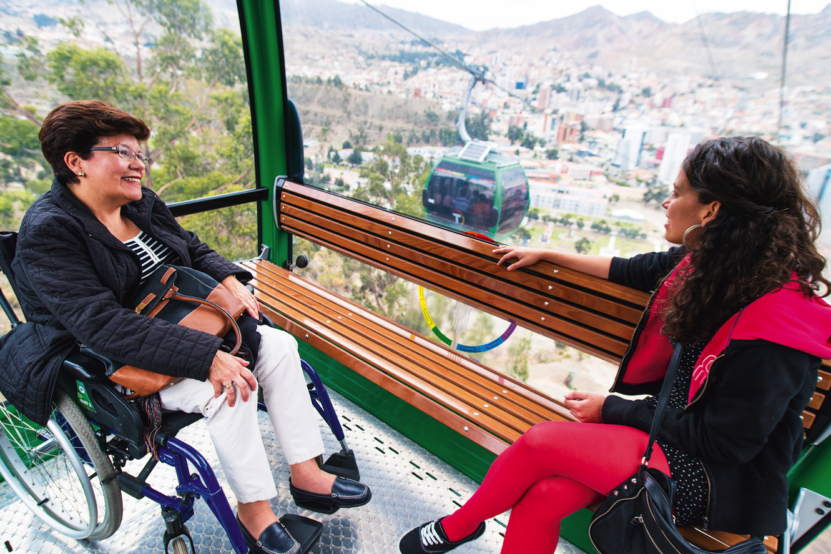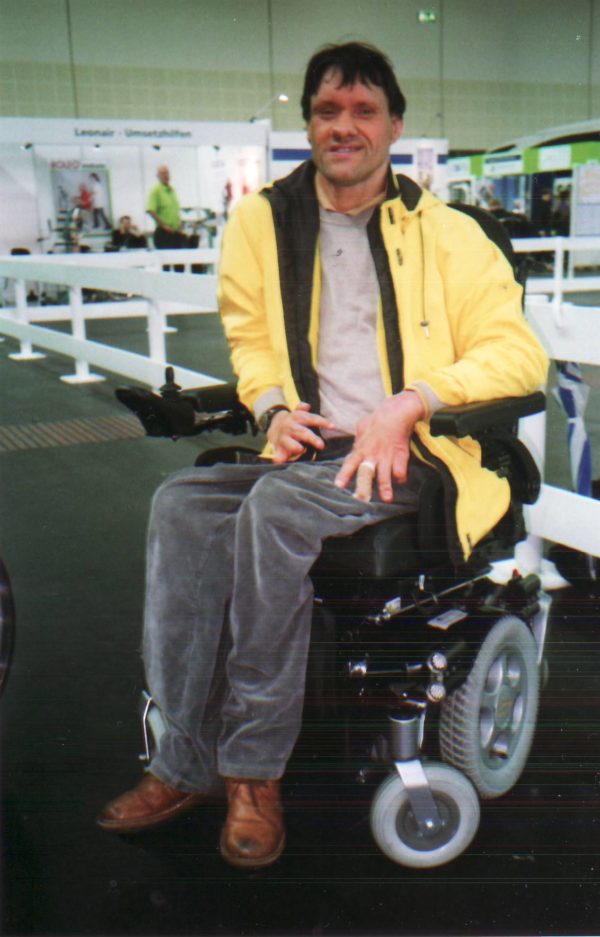
Cities, SI Urban 1/2021, Tourism
Barrier-free: Urban cable cars for all
SI Urban: Mr Lackner, you are in a wheelchair yourself and you have had many modes of transport designed to be accessible for disabled people. To what extent are (urban) cable cars a barrier-free mode of transport?
Frank Lackner: The gondolas as well as the entrances and exits of cable cars are essentially barrier-free ex works. This means that bulky items such as wheelchairs, pushchairs or bicycles can be carried in the gondolas with no problem – even in small gondolas, as the doors are wide enough and the seats can be folded up.
As the individual gondolas move only at a slow speed within the station, it is possible to board and alight with no major problems, even for people with limited mobility. If necessary, the gondolas can even be stopped completely, for stationary boarding. If anything, the problem lies with the stations.
In what sense?
Unfortunately, barrier-free station design is sometimes forgotten – a problem that also occurs with other means of transport, such as at railway stations, bus stations or tram stops. Stations can easily be made barrier-free here: with a level installation or with access to higher entrance levels by means of lifts, stair lifts and ramps.
At INTERROLLI, we are happy to help with this; we have developed practical concepts based on personal experience, since we know what wheelchair users need and that the failure point is often a step of a few centimetres.

Barrier-free
The Grünberg cable car in Gmunden (left) and the Zwölferhorn cable car in St Gilgen are two Austrian examples,
where INTERROLLI has successfully campaigned for barrier-free access.
So how do you get involved?
Our 155 members test barrier-free access to transport worldwide and proactively make operators aware of failure points.
In the cable car sector, with specific suggestions, we were able to have the Gemsstock cable car in the Swiss village of Andermatt adapted to be suitable for wheelchairs.
It is even better if we are involved right from the planning of new lines. This was the case, for example, with the wheelchair-accessible large-gondola cable car to Grünberg mountain from the Austrian town of Gmunden. The latest example is the Zwölferhorn cable car: the new, wheelchair-accessible cable car in the Austrian village of St Gilgen opened in October 2020, after many years of hard work on our part.
Cog railways can also be constructed to be barrier-free. The best example of this is the Schafberg railway in the Austrian Salzkammergut region. Another cable car system, the inclined elevator, is naturally suited to wheelchairs – in this case, I am happy to mention a German installation on the Hamburg metro network.
The Zwölferhorn cable car in St Gilgen

What about funicular railways?
The gradient and the normally tiered entry actually make barrier-free accessibility more difficult to achieve in funicular railway stations. However, even this system can be made barrier-free, with level access at the bottom of the first compartment or at the top of the last compartment.
As with aerial cableways, a test by wheelchair users would be useful here before operation begins.
Should barrier-free accessibility be compulsory?
Generally, Switzerland and Sweden are considered to be the countries with the public transport that is most suitable for wheelchairs. In the cable car sector, countries such as Germany, Austria, Italy and several former Eastern Bloc states still have some catching up to do when it comes to facilities that are suitable for wheelchairs.
So, I find a public list of the world’s cable cars currently suitable for wheelchairs extremely useful and helpful. However, the list needs to be updated once a year and all operators should ideally have to provide the relevant data for this
– a big undertaking indeed.
A sort of guide for wheelchair users?
I find nothing more frustrating than if I read about a barrier-free cable car and then get stuck at steps when I am there. Too often, barrier-free accessibility is equated with staff to help a wheelchair user, but that is not enough. Sometimes the staff do not have the time, sometimes they lack the knowledge.
Moreover, I do not want to be reliant on someone else every time – and in any case, such a staff-intensive and time-consuming approach would hardly be practical for urban cable cars.
The interview was conducted by Thomas Surrer.
Frank Lackner is a board member of INTERROLLI. Photo: Personal

About INTERROLLI
The international citizens’ initiative for the interests of wheelchair users (INTERROLLI) is a global group of people with and without physical disabilities, who have got to know one another over the last 30 years, mainly through publicity and signature campaigns. It currently has 155 members from 14 countries, and its head office is in the German city of Göttingen.
INTERROLLI proactively campaigns for public buildings and transport to be designed in a way that is suitable for wheelchairs, particularly so that wheelchair users, people with limited mobility and pushchair users can use them with the fewest possible barriers to access.







